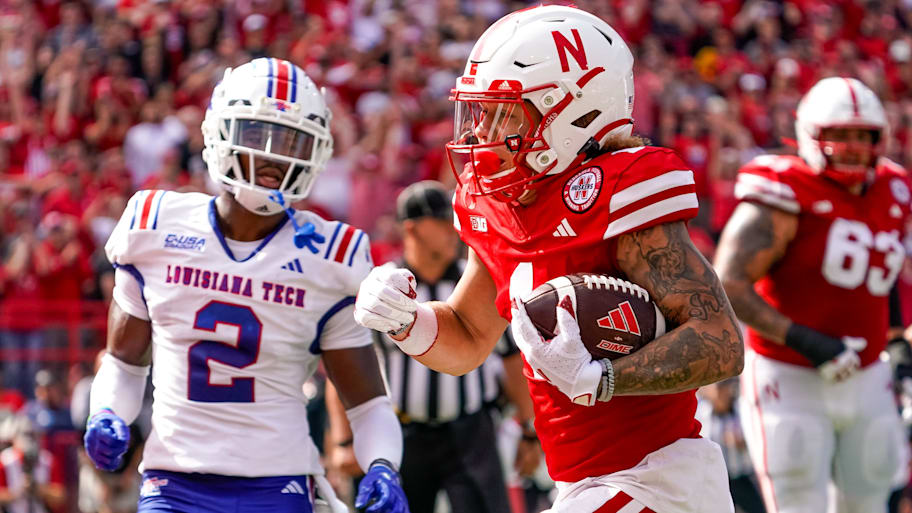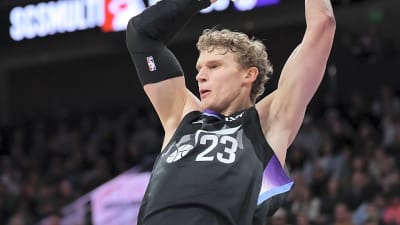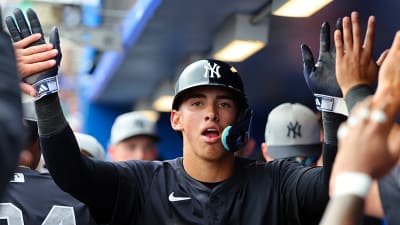At Big Ten Media Days in late July, Matt Rhule delivered a blunt truth: before he arrived, Nebraska was considered "not a good job” in the coaching world.
That may have shocked some fans, but a quick glance at the near-decade of losing seasons before his hire makes his point hard to argue.
With this in mind, it got me wondering, if the facilities and culture were so far off, how bad was the roster he inherited? To find out, I decided to look at the position groups that have struggled the most in recent years and compare them to where they appear to be trending in 2025.
And what better place to start than wide receiver, as one of Nebraska’s most underutilized and inconsistent units since, really, the Pelini era.
1. 2023 Nebraska Receiving Room

While the transfer portal was available in 2023, it wasn’t yet the roster-rebuilding tool it’s become since. Matt Rhule made a few additions in his first year, but the wide receiver room still lacked proven firepower.
The most notable pickup was one-year rental Billy Kemp IV, who led the team with 310 receiving yards on 35 catches but fell short of expectations. Behind him was tight end Thomas Fidone II, whose 25 receptions for 260 yards and four touchdowns made him a reliable red-zone option. True freshman Jaylen Lloyd flashed big-play potential, hauling in six passes for 237 yards and three touchdowns. His 39.5 yards per catch ranked second in the nation behind future first-round pick Marvin Harrison Jr.
Beyond that trio, consistency was hard to find, and it's fair to note that quarterback play didn’t help. Jeff Sims began the season as the starter but quickly unraveled, struggling with turnovers and never finding rhythm. Heinrich Haarberg provided a midseason spark but posted just a 1:1 touchdown-to-interception ratio and took 20 sacks despite starting only half the games. Chubba Purdy played better late in the year, but none of the three inspired confidence as a long-term answer.
Add in the fact that the offensive line only compounded the issue, allowing 30 sacks in 12 games, despite all three quarterbacks being considered mobile, and it's clear to see Rhule simply did not have a good enough team to compete in the Big Ten.
2. 2024 Nebraska Receiving Room
The 2024 season fixed a lot of what plagued Nebraska’s offense the year before, most notably at quarterback. With a new signal caller, even as a true freshman, Dylan Raiola threw for over 1,300 more yards than the team did the year prior. That surge in production meant the wide receiver room finally had a chance to shine.
Jahmal Banks led the way with 44 catches for 587 yards and three touchdowns, nearly doubling the yardage total of Nebraska’s leading receiver from the previous season. Isaiah Neyor followed with 34 receptions for 455 yards and a team-high five touchdowns. True freshman Jacory Barney Jr. made history, hauling in 55 passes, the most by a freshman in school history, for 447 yards. Tight end Thomas Fidone II remained a steady target with 36 grabs for 373 yards, while running back Emmett Johnson emerged as a threat in the passing game, adding 39 receptions for 286 yards.
Improved quarterback play also brought more balance. Three different players led the team in the three major receiving categories (yards, receptions, touchdowns), proof that Nebraska could spread the ball and build depth offensively. While only two of last year’s top six receivers return, both carry high expectations into 2025.
3. 2025 Nebraska Receiving Room
Looking ahead to 2025, Nebraska appears to have addressed many of the questions that lingered in recent years. With three recruiting cycles and transfer portal windows under his belt, Matt Rhule has built a receiver room with a strong blend of proven veterans and promising young talent that could be poised to make a jump this fall.
It starts with Jacory Barney Jr., who readies himself for an even bigger role in 2025. Joining him are two high-profile transfers, both proven No. 1 options at their previous schools. Dane Key caught 47 passes for 715 yards and two scores last season, while Nyziah Hunter hauled in 40 receptions for 578 yards and five touchdowns as a redshirt freshman at Cal.
Behind that trio, the room gets younger but not less dangerous. Redshirt freshmen Quinn Clark (6-foot-5) and Keelan Smith (6-foot-3) have impressed early in fall camp, with offensive coordinator Dana Holgorsen noting they’re pushing Hunter for starting reps. Senior Janiran Bonner (6-foot-2, 225 pounds) brings versatility as a utility player, while true freshmen Cortez Mills (6-feet) and Jeremiah Jones (6-foot-4) have already drawn praise from the coaching staff and could follow Barney’s path to immediate playing time.
What It Means and Why They'll be Better.
Nebraska’s 2025 receiver room looks vastly different, and better, than it did just two years ago. The top six receivers now average over 6-foot-2 and 204 pounds, compared to 6-feet and 188 pounds in 2023. More than size, this group is young and talented, with five of six expected contributors still sophomores or younger, setting the foundation for sustained success.
Gone are the days of undersized receivers; Nebraska’s new crop is built to handle the physical demands of the Big Ten. This depth isn’t reliant on one star but on multiple players who can impact the game in diverse ways. Coupled with Raiola’s growing skill in the passing game and a more experienced offensive system, the Huskers have more weapons and opportunities than ever before.
Add in proven coaching upgrades in Dana Holgorsen and Daikiel Shorts, and this wide receiver room could quickly become one of the conference’s best. The buzz inside Nebraska’s program is real, and if the Huskers take the next step in 2025, the wide receivers will be a major reason why.
More must-reads:
- The four most interesting new college football coaching situations
- NFL Draft intel: Big Ten QB's elite arm turning heads among scouts
- The 'Season rushing TD leaders by NFL team' quiz
Breaking News
Trending News
Customize Your Newsletter
 +
+
Get the latest news and rumors, customized to your favorite sports and teams. Emailed daily. Always free!








